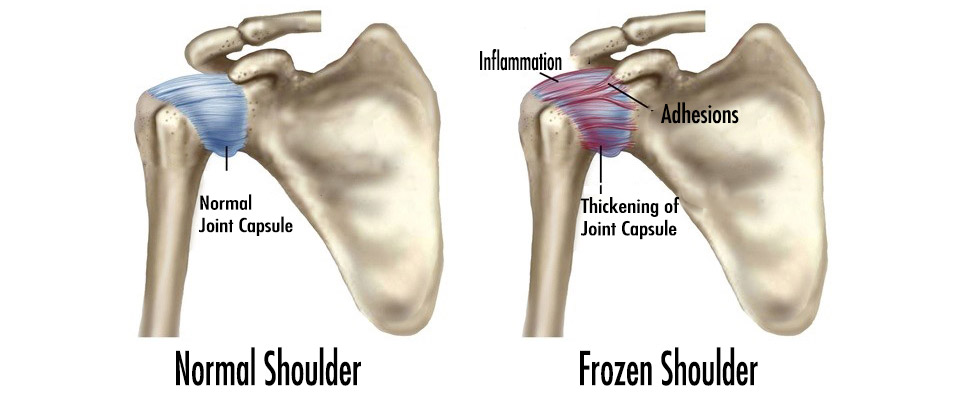How to diagnose Frozen Shoulder?
The diagnosis of frozen shoulder is made by examination. It is seen by the physician, that shoulder movements are limited both actively and passively MRI may be requested not to diagnose frozen shoulder but to distinguish other problems.
How is Frozen Shoulder Treated ?
The primary treatment of frozen shoulder is non-surgical methods. Treatment is based on relieving pain and restoring movements. Anti-inflammatory pain medications and intra-articular cortisone injections, stretching and cold applications in the first phase which will not increase the pain are used for this purpose. After the freezing phase and when the pain subsides, more challenging exercises can be started. Again, to relieve pain; nerve blocks, radiofrequency and burning the pain sensation receiving nerve can give good results.
In patients who have not responded to non-surgical treatments for six months, manipulation under general anaesthesia may be performed. After full muscle relaxation during manipulation, the doctor loosens the capsule with various manoeuvres and opens shoulder movements. After a serious rehabilitation program, shoulder movements which re-obtained are preserved.
If the shoulder movements cannot be achieved by manipulation, the soft tissues that are thickened and which prevent movements are loosened by cutting in arthroscopic surgery. Rehabilitation should be performed after frozen shoulder surgery. Even after surgery, the frozen shoulder can recur in 5-10%.
What if the Frozen Shoulder is left untreated?
The duration of disease continuation varies from patient to patient after the onset of frozen shoulder complaints. In the literature, it is seen that the disease persists for 3-10 years in untreated cases. Although this long period of time, it is possible that in many patients, shoulder mobility is almost completely restored. However, in some of the untreated frozen shoulder patients, movement limitation and sequellae remain.

